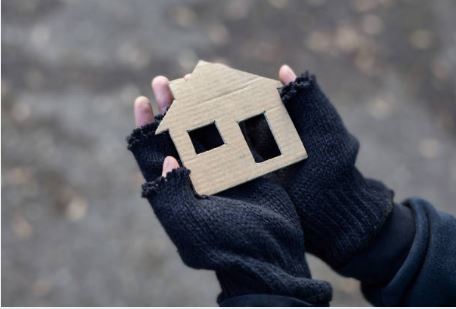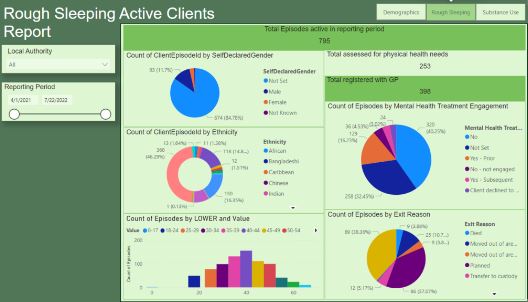Useful Links:
The UK Government 10 Year Drug Strategy
|
Rough sleeping continues to be a major challenge across all areas of the UK. With the current cost of living crisis and the highest rates of inflation for more than 40 years, these factors are likely to only exacerbate the situation. The government has launched numerous strategies over the years to help tackle this problem. Most recently, the UK Government’s Rough Sleeping Strategy set out ambitious targets to halve the numbers of people sleeping rough by 2022, and ending rough sleeping by 2027. In March 2020, at the advent of the Covid-19 pandemic, the government launched the Everyone In initiative which aimed to house people experiencing rough sleeping, who were unable to self-isolate, in temporary accommodation.
In December 2020, the government announced that £23m in funding will be made available to services to support people with drug and alcohol problems that are sleeping rough. This funding – made available through the Rough Sleeping Drug and Alcohol Treatment Grant (RSDATG) – has since helped many vulnerable individuals with limited access to primary or social care, receive specialist substance misuse treatment. This funding is hosted by local authorities to work in collaboration with local partners. and has since been boosted by a further £52m in the last two years. As part of this strategy, Office for Health Improvement and Disparities (OHID) – Within the Department of Health and Social Care (DHSC) partnered with ILLY Systems to develop and deliver a simple to use and compliant case management system that enables front-line case workers to capture the work they do with this vulnerable cohort, with this data then being made available to both commissioners and OHID for analysis. ILLY were grateful to be a part of this amazing initiative and have since on-boarded many local authorities across England and supported them to evidence the hard work they’re doing.
|
|
Current Picture Recent statistics show that there were 2,440 people estimated to be sleeping rough on a single night in autumn 2021. This is down by 250 people – or 9 % – from last year, which is a 49% reduction from the peak in 2017. These figures underline the hard work of service providers and local councils in recent years. However, it is clear that there is still more work to be done, and that reducing the number of people ‘Rough Sleeping’ is only one aspect of the wider challenge of tackling homelessness. Rough sleeping is the most visible and extreme form of homelessness, where people are exposed to risk on a daily basis by sleeping in the open air in shop doorways, abandoned buildings, alleyways or under bridges – risking their lives through exposure to extreme weather conditions, hunger, as well as the constant fear of being assaulted or having their belongings stolen or destroyed. |
|
|
Why do people sleep rough and what are the challenges? Generally, individuals that experience rough sleeping present with a range of complex issues – some of which are entrenched and will have contributed to their social exclusion, whilst others are borne from their daily experiences of day-to-day survival. The causes of rough sleeping can typically be described as being either environmental or individual factors, with each factor impacting from / contributing to each other.
|
|
Environment Factors:
|
Individual factors:
|
|
Being able to address these complexities is a key element in achieving positive outcomes, and services will offer trauma-informed support packages tailored to the individual. Traumatic experiences often occur in childhood, in the form of ACEs, but trauma can be experienced at any time in a person’s life and have a devastating impact on physical and mental health, and can lead to problematic substance use. According to The Combined Homelessness and Information network (CHAIN) in London alone around 3% of people sleeping rough in 2019/2020 were UK nationals with experience of serving in the armed forces. This number increases to 6% when foreign nationals are taken into account. The issues that veterans face are often a result of their difficulty in re-adjusting to society following years of service, living a regimented lifestyle and being exposed to battlefield trauma. The issues above highlights the importance of offering trauma-informed care, a common practice amongst most healthcare providers. It is also strongly advocated in the government’s 10-year drug strategy which emphasises that such an approach is ‘fundamental in helping service providers prevent the onset of drug use among children and young people’. |
 |
|
The co-morbid relationship between mental and physical health is well documented, and poor physical health both contributes to and is caused by homelessness. Research has shown those who are rough sleeping develop greater health issues than the average person, for example, 5% of those classed as homeless are diagnosed with COPD, compared to 2% of the general population.
What is being done to help? Despite rough sleeping making up a relatively small percentage of the broader homeless population, their needs are so complex and urgent – particularly in the context of the pandemic and subsequent lockdown policies – that their needs were prioritised by recent government strategies. And these strategies have already had very positive outcomes – the reduction in the number of people seen rough sleeping in London in 2021/22, for example, can be attributed to the success of the ‘Everyone In’ initiative. The Government’s 10yr Drug Strategy- From Harm to Hope – will continue to build on the positive outcomes of these initiatives by focusing on collaborative working and ensuring the government and public services work together. How can ILLY help? ILLY has been providing the Rough Sleepers case management system for a number of local authorities across England since September 2021. In that time, service workers have been using our system to record the work they’re doing to address their client’s needs, with this data then being made available to both commissioners and OHID via bespoke Commissioner Dashboards. These dashboards have been a valuable tool for commissioners to see the hard work that is being done by their services on a daily basis and helping them to spot trends and better allocate resources. OHID also has access to their own dashboards from which they’re able to extract the quarterly submissions, saving time for service managers and data leads. This article is the first part of our series on addressing the challenges of Rough Sleeping. The next part of the series will be available on 1st September 2022 – in this we will detail the next steps of the Rough Sleeping initiatives and how these will be implemented. |




